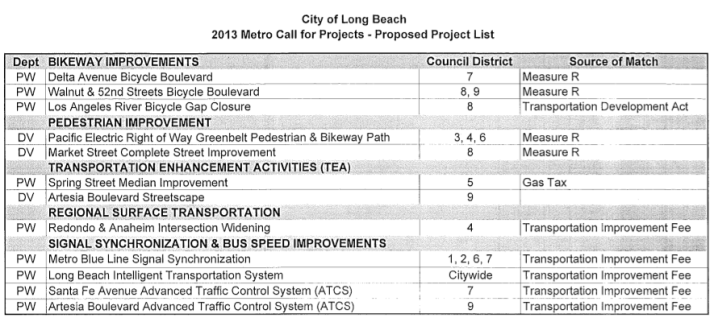
It is the wrong way to be advertising the use of public transportation--and to experience this egregious advert, one simply has to take the Blue Line through Long Beach. And if you're lucky, you'll only hit one or two lights as you watch individual commuters putt-putt past you while the entire Metro trains halts.
The gripe of Blue Line commuters coming in and out of Long Beach wrests on the fact that it's the only stretch which doesn't have a signal preemption system--that is, controllers for the movement of traffic that gives preference to Metro trains rather than street traffic (and not to be confused with signal priority technology used for buses).
When the line was first implemented, it had been foreseen that the train would be given priority signalization--in other words: a guaranteed green light. The system however failed countywide, eventually prompting the City of Los Angeles to score a grant in which it developed its own traffic signal priority system.
The Blue Line has not only faced signal pre-emption issues in Long Beach, nor have the other lines been exempt. Through the previously mentioned grant, LADOT finally provided signal priority on Washington Street in 2011 after a multitude of complaints and three years of studies. Much to the chiding to this day of public transit commuters that preemption was not implemented since signal priority attempts to either hold a green light longer or give a green early rather than providing a guaranteed green for trains.
However, Long Beach's home stretch is often times absurd, adding 20 minutes to a Downtown LA commute if you happen to hit reds at a multitude of the 32 signals paralleling the Blue Line. So why, precisely, not just adopt the Los Angeles system? Well, of course, that would be too easy and the Universe loves to mock: we use an entirely different traffic signal system than L.A. and the software provider for L.B.'s system was unable to make the transition work--effectively abandoning the project.
But there is (not a traffic) light at the end of the tunnel.
Dave Roseman, City Traffic Engineer for Long Beach, admittedly said this is not the first time he has had to deal with this issue (he even received a complaint through the Mayor's Office last week). And though there is light, he is still blunt:
"There isn't a simple solution," he said. "And it's not that we're refusing to at least synchronize the traffic signals. It seems like a simple problem--but in fact, it is not."
Given that two trains travel in two directions, Roseman pointed out that the pedestrian cannot be "short changed" by being left in the middle of a crosswalk while trains pass on both sides of him/her. And according to Roseman, the key to solving this is by adopting L.A.'s system--and apparently, Long Beach has begun that process.
Thanks to funding from Boeing, 165 traffic signals surrounding the airport have been successfully converted to the Angelino system over the past two years, prompting an agreement between Metro and the city to convert the 32 Blue Line signals.
"The only issue for us is funding," Roseman said. "Making the conversion is likely to cost somewhere in the neighborhood of $1.5 million."
But once again: light. Earlier this month, the City Council endorsed the submission of a grant funding application to Metro to cover the majority of the cost of the conversion project.
"We have high hopes that Metro will fund the project and we can begin the process of upgrading our systems by the end of this calendar year," Roseman said. "We should know in about 90 days if Metro will be awarding us the funds we have requested and just when those funds will be made available to us."
You're not the only with high hopes, David.






